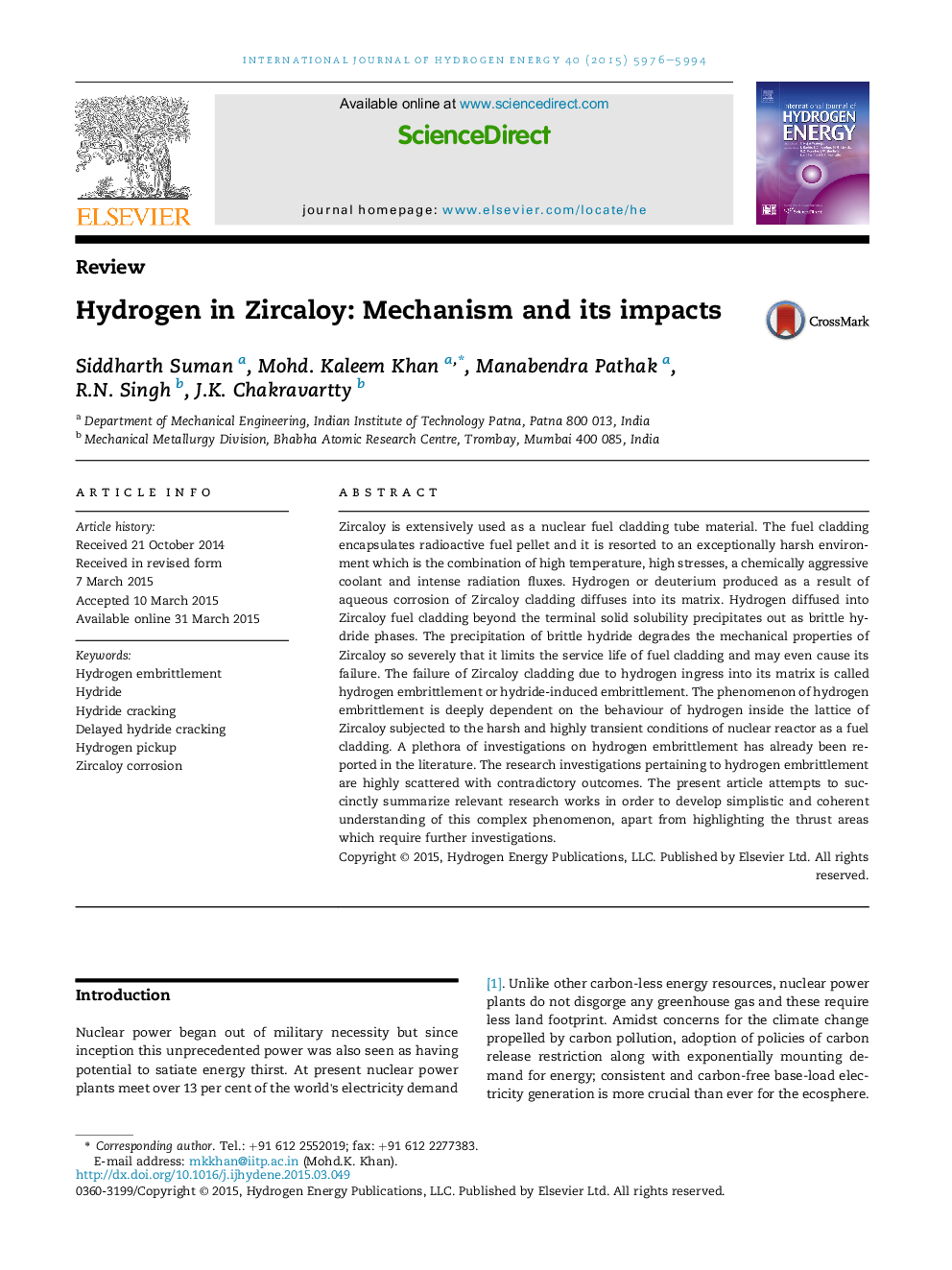| Article ID | Journal | Published Year | Pages | File Type |
|---|---|---|---|---|
| 1275444 | International Journal of Hydrogen Energy | 2015 | 19 Pages |
•Hydrogen embrittlement limits service-life of nuclear fuel claddings.•Mechanisms of hydrogen diffusion in Zircaloy are summarized.•Effect of hydrogen ingress on crack growth in Zircaloy is presented.•Investigation of delayed hydride cracking is important for high-burnup fuel cladding.
Zircaloy is extensively used as a nuclear fuel cladding tube material. The fuel cladding encapsulates radioactive fuel pellet and it is resorted to an exceptionally harsh environment which is the combination of high temperature, high stresses, a chemically aggressive coolant and intense radiation fluxes. Hydrogen or deuterium produced as a result of aqueous corrosion of Zircaloy cladding diffuses into its matrix. Hydrogen diffused into Zircaloy fuel cladding beyond the terminal solid solubility precipitates out as brittle hydride phases. The precipitation of brittle hydride degrades the mechanical properties of Zircaloy so severely that it limits the service life of fuel cladding and may even cause its failure. The failure of Zircaloy cladding due to hydrogen ingress into its matrix is called hydrogen embrittlement or hydride-induced embrittlement. The phenomenon of hydrogen embrittlement is deeply dependent on the behaviour of hydrogen inside the lattice of Zircaloy subjected to the harsh and highly transient conditions of nuclear reactor as a fuel cladding. A plethora of investigations on hydrogen embrittlement has already been reported in the literature. The research investigations pertaining to hydrogen embrittlement are highly scattered with contradictory outcomes. The present article attempts to succinctly summarize relevant research works in order to develop simplistic and coherent understanding of this complex phenomenon, apart from highlighting the thrust areas which require further investigations.
